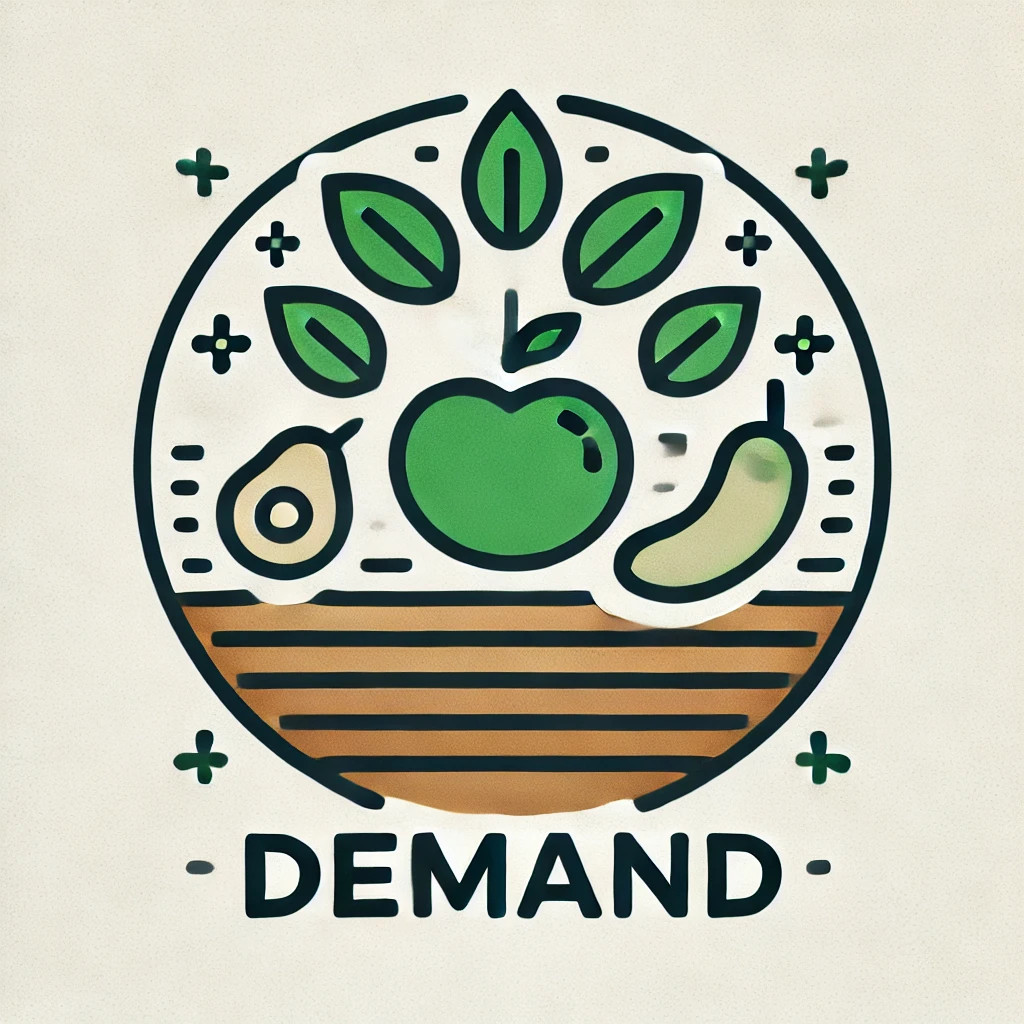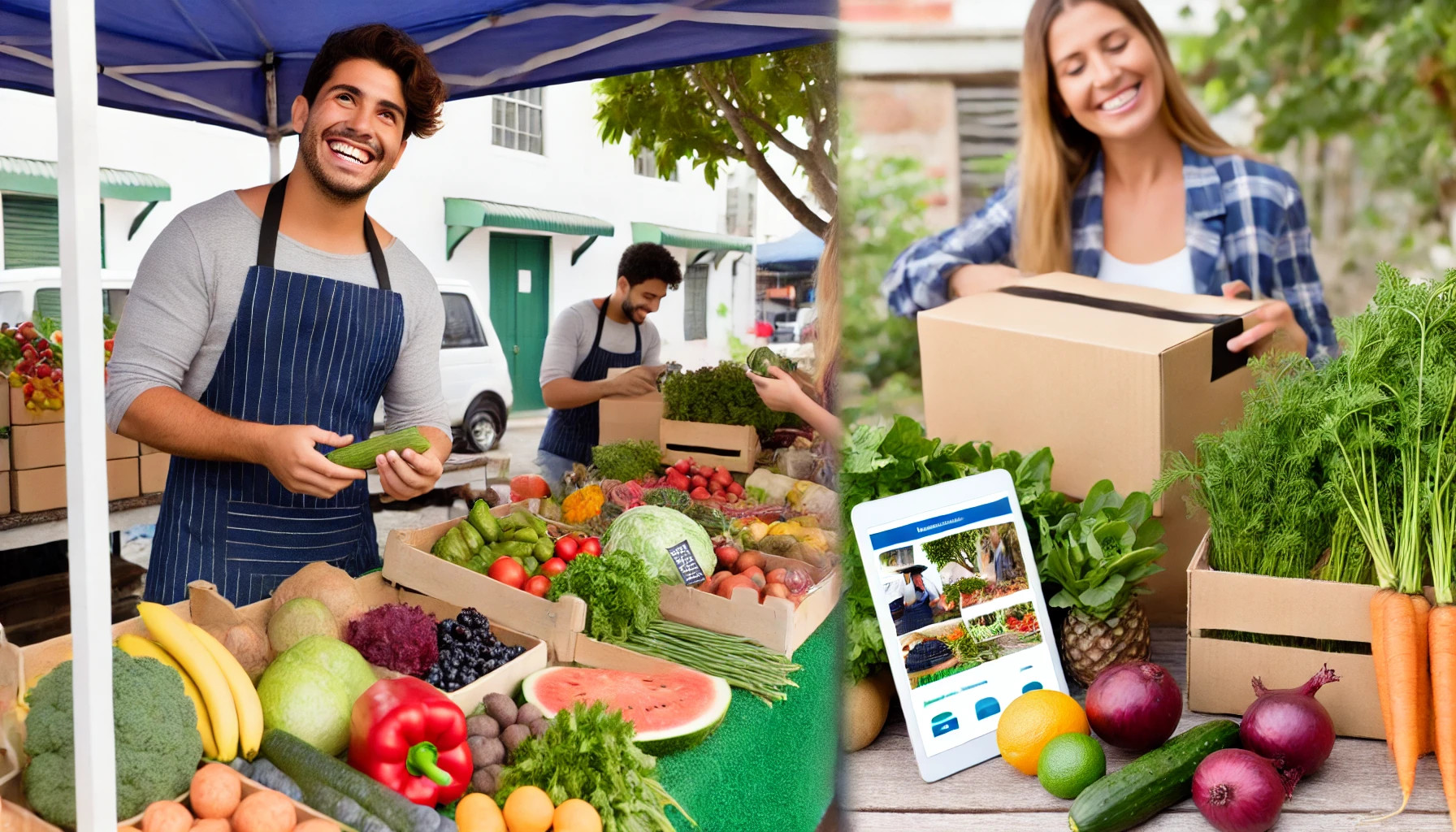Az AFN-ek előtt álló kihívások és lehetőségek (5 perc)
Ebben a részben az alternatív élelmiszer-hálózatok (AFN-ek) dinamikus működését ismerhetik meg. Megtanulhatják azokat a kihívásokat, amelyekkel ezek a hálózatok szembesülnek, mint például a hagyományos élelmiszerrendszerekkel való verseny, a logisztikai akadályok és a fogyasztói edukálás szükségessége. Azt is feltárjuk, hogy az AFN-ek milyen lehetőségeket kínálnak egy fenntarthatóbb és méltányosabb élelmiszerrendszer létrehozására, beleértve az innováció előmozdítását, a közösség ellenálló képességének kiépítését és az élelmiszer-önrendelkezés előmozdítását.
Míg az AFN-ek számos előnyt kínálnak, képesek olyan bonyolultabb környezetben is talpon maradni, amelyek akadályokkal és növekedési potenciállal egyaránt rendelkeznek.
Az AFN-ek egyik fő hátránya a hagyományos élelmiszerrendszerek által diktált verseny. A nagyüzemi ipari mezőgazdaság gyakran kihasználja a méretgazdaságosság előnyeit, lehetővé téve számukra, hogy alacsonyabb árakat kínáljanak, amelyekkel a kisebb, helyi termelők nehezen tudnak versenyezni. Emellett sok fogyasztó hozzászokott a szupermarketekben történő élelmiszervásárlás kényelméhez, ami megnehezíti az AFN-ek számára, hogy a hagyományos marketing és forgalmazási csatornákon keresztül elérjék ezeket a vásárlókat.
A logisztika jelentős kihívások elé állítja az AFN-eket. A helyi termékek szezonalitása és változékonysága, valamint a tárolás és szállítás korlátai gyakran megnehezítik az AFN-ek számára, hogy következetesen kielégítsék a keresletet. A nagyvolumenű kiskereskedőktől eltérően az AFN-ek jellemzően nem rendelkeznek kifinomult logisztikai infrastruktúrával, ami megnehezíti a friss, romlandó termékek hatékony elosztását, különösen a vidéki vagy kevésbé sűrűn lakott területeken. A hűtési lánc kezelése egy másik nagy kihívás, különösen a kisebb AFN-ek esetében, mivel a szükséges feltételek fenntartása költséges és összetett. E nehézségek miatt az AFN-ek már most is küzdenek a költséghatékony logisztika telepítésével, ami még hangsúlyosabb probléma a szegény infrastruktúrával rendelkező vidéki területek kisebb termelői számára. E kihívások leküzdése érdekében az AFN-eknek együtt kell működniük a logisztikában, vagy fontolóra kell venniük más vállalatok által biztosított rendszerek használatát, amelyek hatékonyabban tudják szállítani az árukat.
Az AFN-ek szabályozási és politikai akadályokba is ütközhetnek. A komplex élelmiszer-biztonsági előírásoknak való megfelelés és a jogi keretek közötti navigálás különösen nagy terhet jelenthet a kisebb szervezetek számára. Ezek az AFN-ek gyakran küzdenek a jogi előírásokkal és címkézési követelményekkel, amelyeket általában nagyüzemi élelmiszergyártási műveletekhez terveztek.
Végül döntő fontosságú a fogyasztók edukálása és az AFN-ek értékével kapcsolatos tudatosság növelése. Az AFN termékek minőségével, árával vagy elérhetőségével kapcsolatos tévhitek elriaszthatják a potenciális vásárlókat, ezért fontos kommunikálni a helyi élelmiszerrendszerek támogatásának előnyeit és az AFN-ek közösségekre és környezetre gyakorolt pozitív hatását.




Ezen kihívások ellenére az AFN-ek sok lehetőséget meg tudnak ragadni. Egyre nagyobb a fogyasztói igény a fenntartható és etikus élelmiszer-alternatívákra, akik egyre inkább tudatában vannak élelmiszereik környezeti és társadalmi hatásaival.
A fogyasztók egyre inkább azokat az embereket keresik, akik megtermelik az élelmiszerüket, mely igényüket az AFN-ek készségesen tudják biztosítani.
A technológiai fejlődés az AFN-ek számára is megnyitja az ajtókat. Az e-kereskedelmi platformok és az online piacterek megkönnyítik a helyi termelők számára, hogy szélesebb közönséget érjenek el, míg a digitális eszközök segítik a gazdaságok irányítását és az ellátási lánc koordinációját, valamint a logisztikai hatékonyságot. Emellett az élelmiszerek tárolásával és tartósításával kapcsolatos új innovációk segítenek a potenciális logisztikai kihívások kezelésében, még hatékonyabbá és ellenállóbbá téve ezeket a hálózatokat. A digitalizáció a hagyományos AFN attribútumokat is javítja azáltal, hogy rövidebb értékláncokat tesz lehetővé, növeli az átláthatóságot, és elősegíti a termelők és a fogyasztók közötti erősebb kapcsolatot.
Az együttműködési modellek, például szövetségek vagy szövetkezetek létrehozása lehetővé teszik a kistermelők számára az erőforrások megosztását, a költségek csökkentését és a nagyobb piacokhoz való hozzáférést, ezáltal növelve versenyképességüket és fenntarthatóságukat.
A helyi közösségekkel való kapcsolattartás rendezvényeken és oktatási programokon keresztül segít a hűséges ügyfélkör kialakításában és elősegíti a támogató környezet kialakítását.
Az AFN-ek együttműködhetnek a helyi élelmiszerrendszerek számára előnyös kormányzati politikák előmozdításában, mint például a fenntartható gazdálkodás támogatása, a kistermelőknek nyújtott támogatások és a fogyasztók ösztönzése a helyi vásárlásra, és a fenntarthatóság iránti növekvő közérdeket felhasználhatják arra, hogy kulcsszereplőkké váljanak a fenntarthatóbb élelmiszerrendszerre való áttérésben.




Miközben az AFN-ek kihívásokkal néznek szembe, hatalmas potenciállal rendelkeznek ugyanis egy ellenállóbb élelmiszerrendszer létrehozására is. Ezeknek az összetettségeknek a megértésével és a lehetőségek megragadásával támogathatjuk és megerősíthetjük az AFN-eket, biztosítva, hogy a gazdálkodók tisztességes árakat kapjanak, a fogyasztók frissebb élelmiszereket élvezzenek, és a helyi közösségek gazdasági növekedést és nagyobb ellenálló képességet tapasztaljanak.



